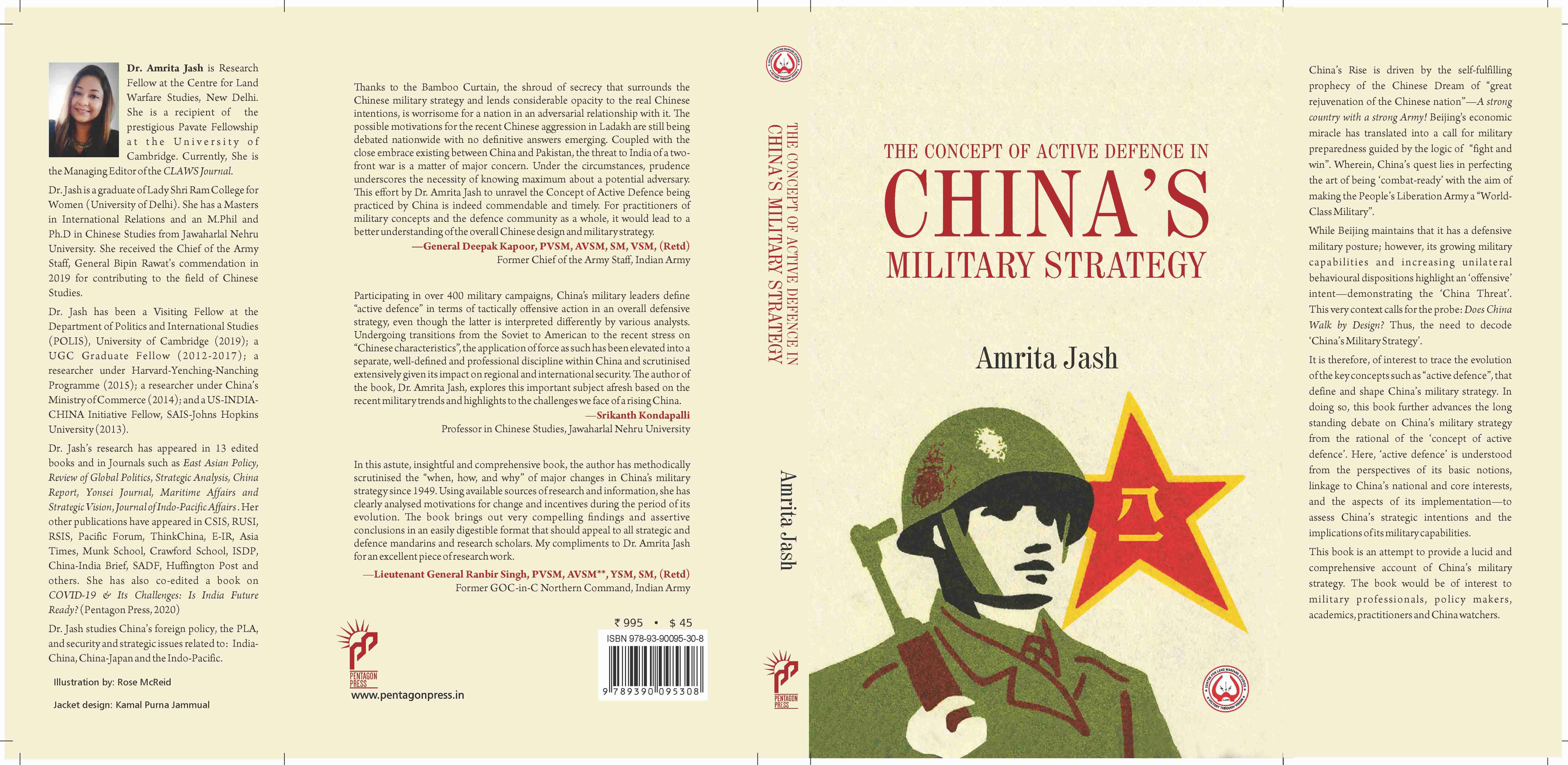The Concept of Active Defence in China's Military Strategy
No single work can fill the analytical gap that exists in the understanding of the concept of ‘active defence’. However, this study represents more of a beginning than an end to the discussion. In doing so, the interest lies in advancing the debate by providing a broad spectrum of understanding and assessment of data as available to date. In this regard, the study makes several arguments and sub-arguments, with the overarching thesis centered on offering a comprehensive perspective on China’s strategic military thinking.
Broadly, the study addresses the following key questions: (a) What is the Chinese understanding of ‘strategy’? (b) What is the nature and significance of “active defence” in shaping China’s Military Strategy? (c) What are China’s strategic interests, intentions and military objectives? (d) What are China’s military capabilities and how does it impact China’s strategic behaviour? And (e) What are the implications of China’s military strategy, both regionally and globally?
Given the vastness of the subject, the scope of the book is limited and mainly concentrated on analysing some of the core issues. In this respect, the book examines the concept of ‘active defence’ in PRC’s national military strategy from the perspective of: its basic notions, the concept of national and core interests and the main goals of maintaining it, and aspects of its implementation. This study seeks to understand the ‘concept’ under the various components that shape China’s Military Strategy, such as: China’s threat analysis; military doctrine/strategic military guidelines; PLA’s force structure, readiness, and training; military budget, arms sales, defence industry and others.
More specifically, the crux of this study lies in assessing the element of ‘offensive defence’ of “active defence” by providing critical assessments of China’s military modernisation and trend analyses of the PLA’s military capabilities, its intentions and its implications. It does so by examining the current state of the PLA in terms of its doctrine, command and control structures, military spending, and weapons and weapon systems. Furthermore, the study makes a critical assessment of China’s strategic behaviour in the context of the India-China boundary dispute, with special focus on the Eastern Ladakh stand-off, based on events that unfolded until 31 December 2020. Thus, this book makes a critical assessment of China’s strategic military thinking and the implications of it for the world at large, and India in particular.
Broadly, the study addresses the following key questions: (a) What is the Chinese understanding of ‘strategy’? (b) What is the nature and significance of “active defence” in shaping China’s Military Strategy? (c) What are China’s strategic interests, intentions and military objectives? (d) What are China’s military capabilities and how does it impact China’s strategic behaviour? And (e) What are the implications of China’s military strategy, both regionally and globally?
Given the vastness of the subject, the scope of the book is limited and mainly concentrated on analysing some of the core issues. In this respect, the book examines the concept of ‘active defence’ in PRC’s national military strategy from the perspective of: its basic notions, the concept of national and core interests and the main goals of maintaining it, and aspects of its implementation. This study seeks to understand the ‘concept’ under the various components that shape China’s Military Strategy, such as: China’s threat analysis; military doctrine/strategic military guidelines; PLA’s force structure, readiness, and training; military budget, arms sales, defence industry and others.
More specifically, the crux of this study lies in assessing the element of ‘offensive defence’ of “active defence” by providing critical assessments of China’s military modernisation and trend analyses of the PLA’s military capabilities, its intentions and its implications. It does so by examining the current state of the PLA in terms of its doctrine, command and control structures, military spending, and weapons and weapon systems. Furthermore, the study makes a critical assessment of China’s strategic behaviour in the context of the India-China boundary dispute, with special focus on the Eastern Ladakh stand-off, based on events that unfolded until 31 December 2020. Thus, this book makes a critical assessment of China’s strategic military thinking and the implications of it for the world at large, and India in particular.

Publisher
Pentagon Press LLP
ISBN
978-93-90095-30-8
Publication date
1 Jan 2021 – 31 Dec 2021
Specialisation
Social Sciences
Theme
International Relations and Politics
Region
China